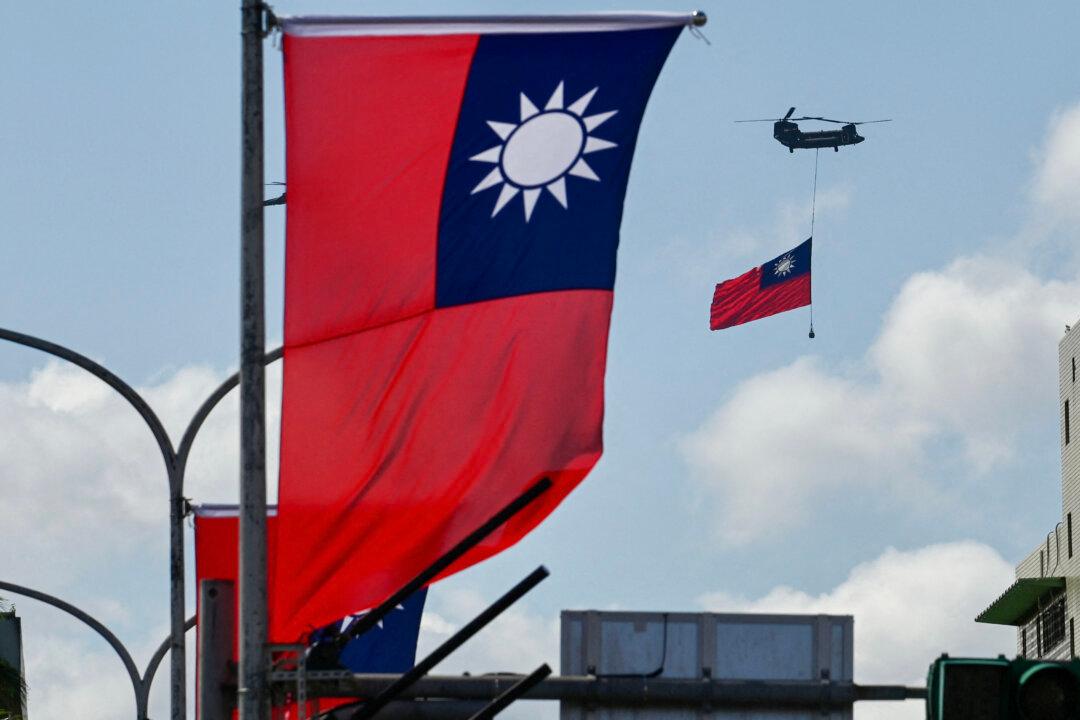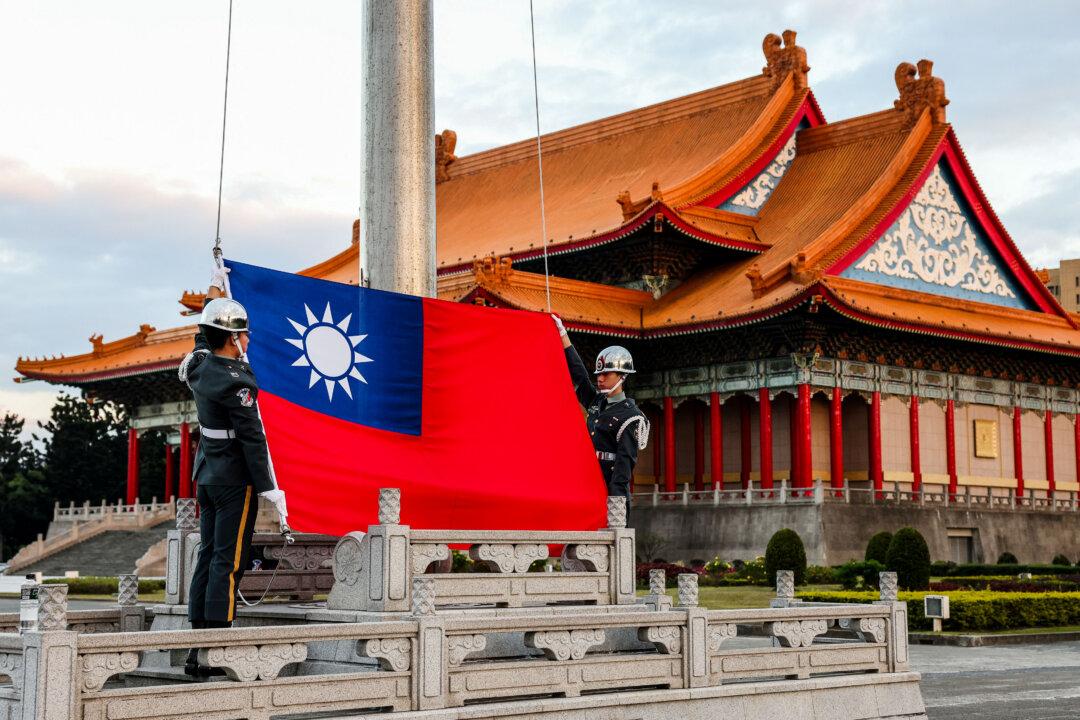Hongkongers took to the streets on July 28 for the second consecutive day of protests in defiance of police objections. Clashes between protesters and police once again resulted in injuries, as officers cleared crowds by firing tear gas, rubber bullets, and sponge grenades.
Public anger has been mounting following the police’s delayed response to a violent mob attack that occurred inside a metro station last weekend.
Six days later, on July 27, scores of protesters converged in Yuen Long to demonstrate against the attacks and what they perceived as police–triad collusion. As police tried to clear them from the streets, protesters retreated into the Yuen Long metro station. In the late evening, baton-wielding police suddenly stormed the station to arrest remaining protesters.
Sunday March
At around 3 p.m. local time on July 28, thousands of protesters arrived at Chater Garden in the Central District for a rally to condemn police use of force in past protests. Organizers said that the turnout at the rally, which went on until 11:00 p.m. local time, was around 11,000 at its peak.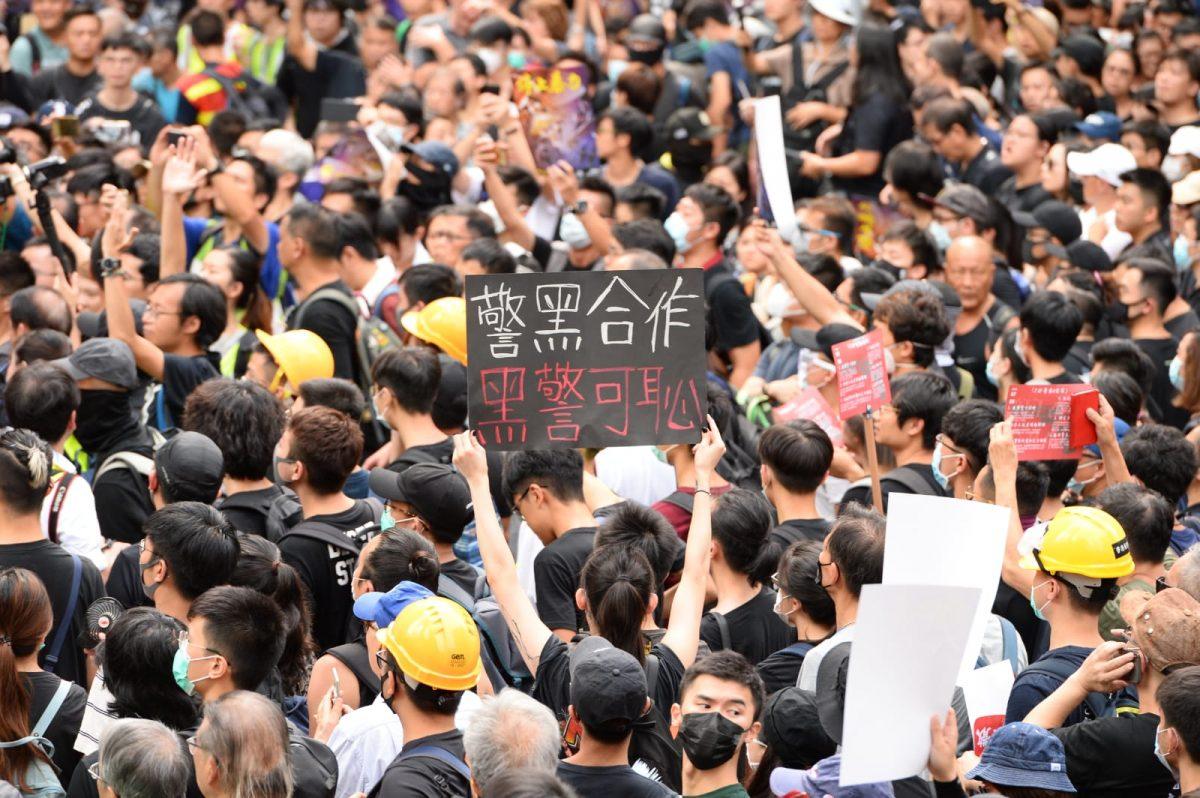
Organizers had planned for a march from the garden to the Sun Yat-Sen Memorial Park in the Sai Ying Pun area, but police rejected the proposal, citing safety concerns.
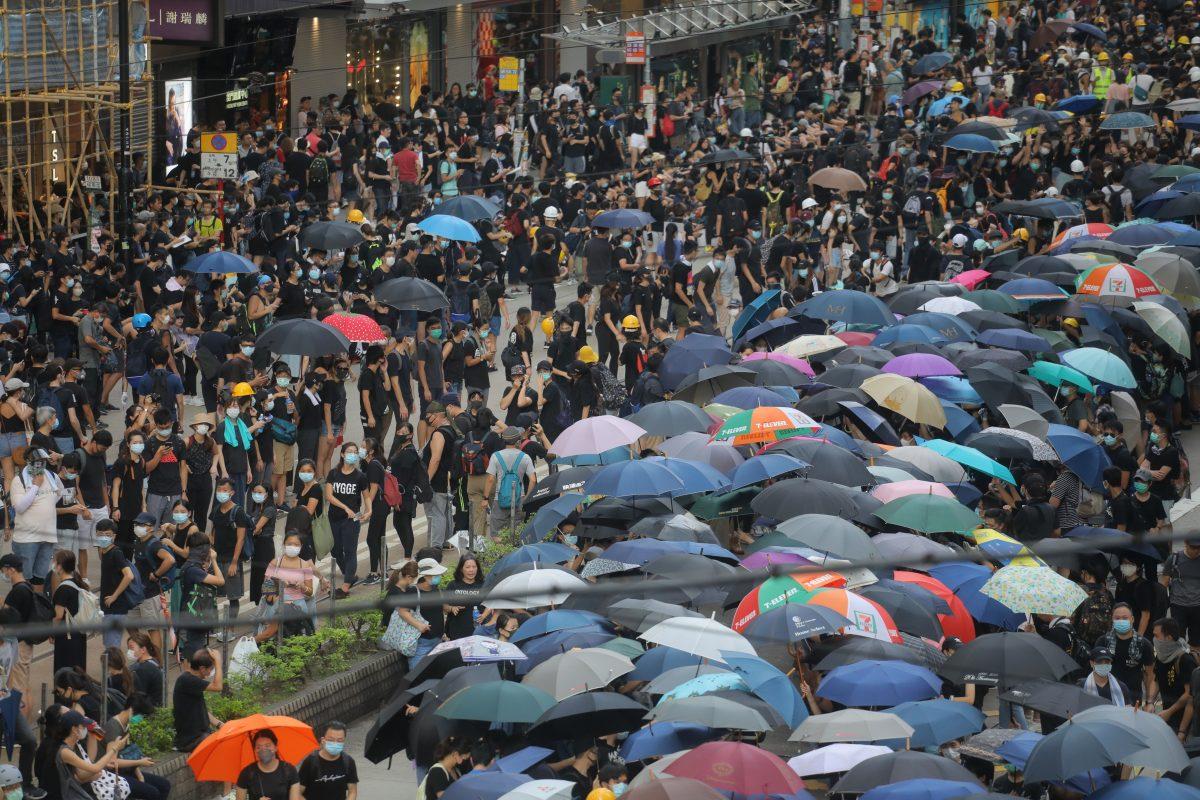
At around 4 p.m., many protesters began dispersing. Thousands decided to march on the streets regardless, with some headed toward Beijing’s representative office, the Hong Kong Liaison Office.
Along the way, protesters shouted different slogans, including “Stop Violence”; “Shame on Black Police,” a reference to suspected ties between police and local triads; “Hong Kong Police Knowingly Break the Law”; and “Go Hongkongers.”
Tensions escalated as the evening wore on and riot police arrived to disperse the crowd.
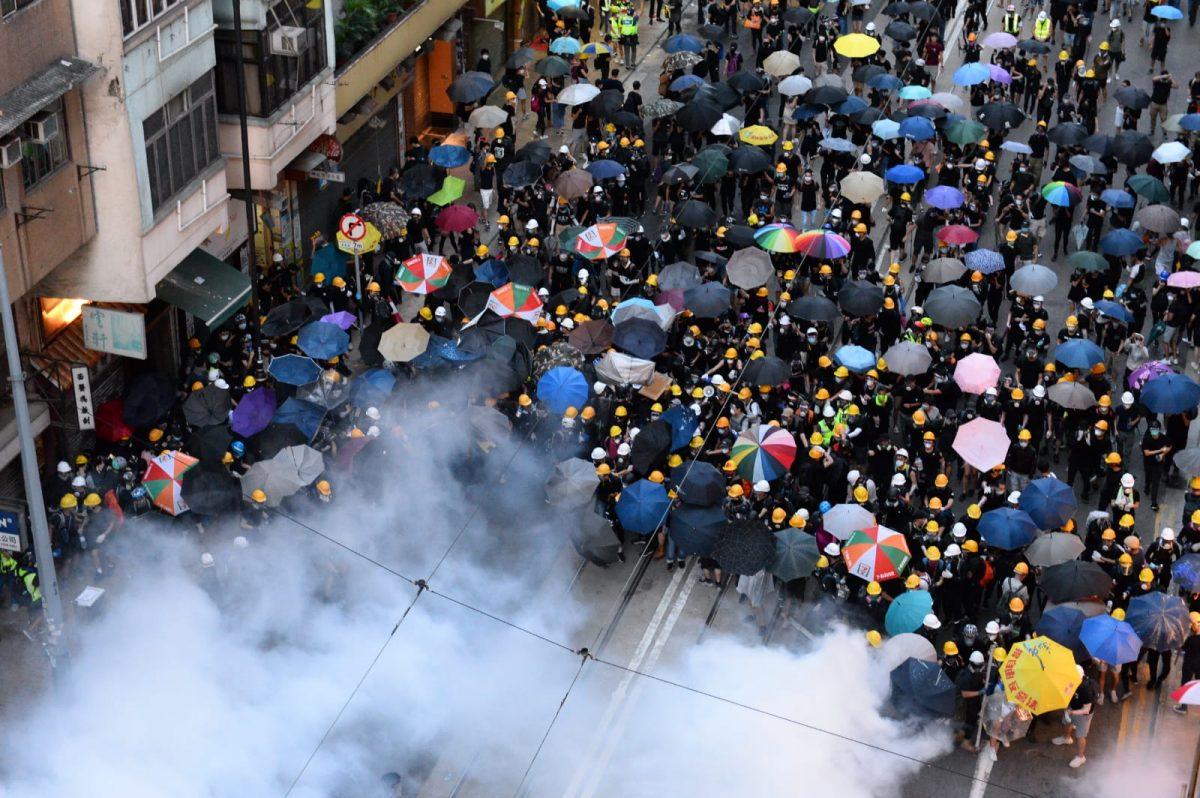
Blocks away from the Liaison Office, protesters formed barricades and held umbrellas in a standoff with the police. Some also spray-painted nearby pillars with the slogan “Recover Hong Kong. Age of revolution.”
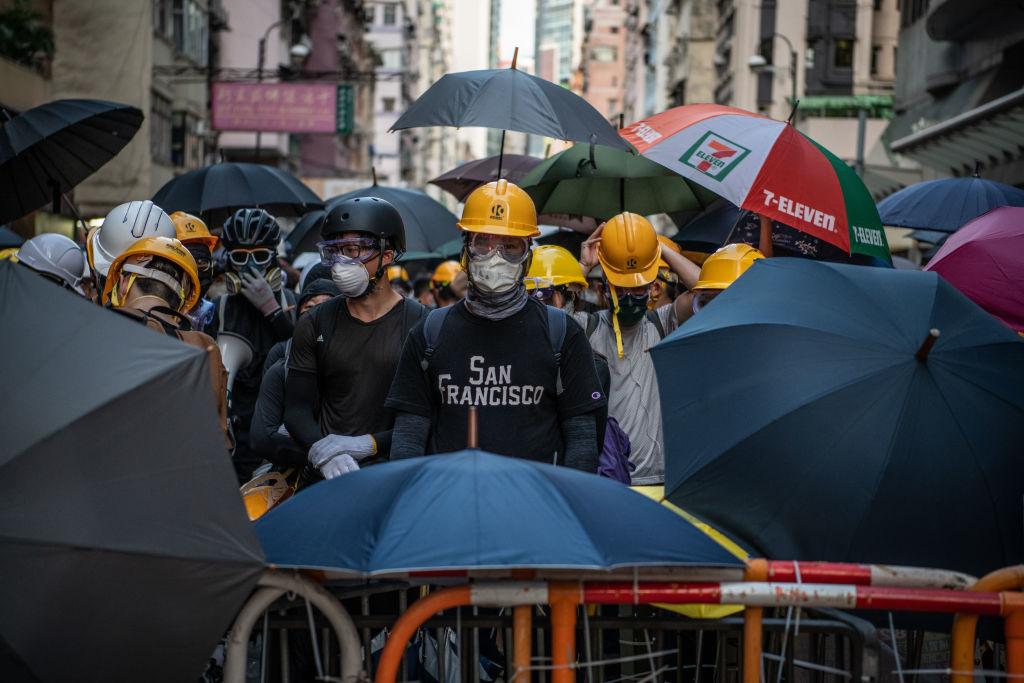
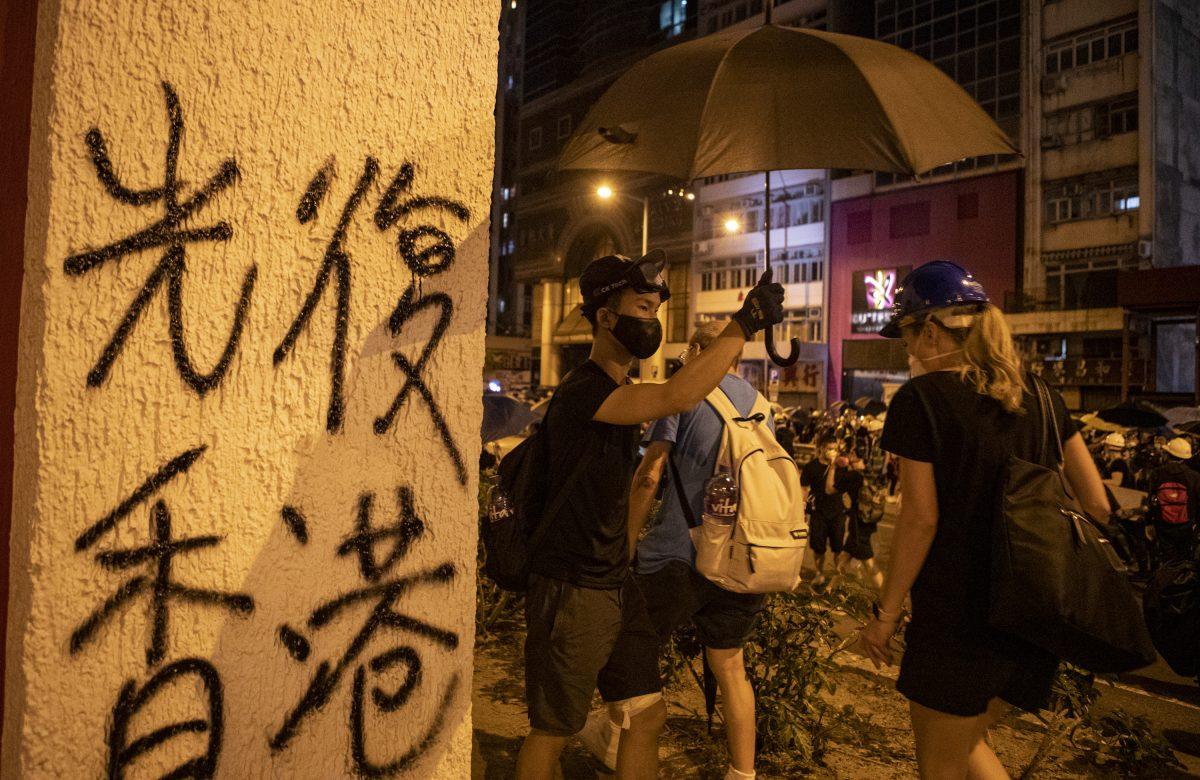
Police fired multiple rounds of tear gas, rubber bullets, and sponge grenades, first around 7 p.m. On Des Voeux Road West in the Sai Wan district, police arrested a dozen or so protesters after firing tear gas. Several protesters were bleeding heavily after being hit by bullets.
The police use of force, in an area mostly filled with residential buildings, drew complaints from locals, who said they were irritated by the billowing smoke from the gas canisters.
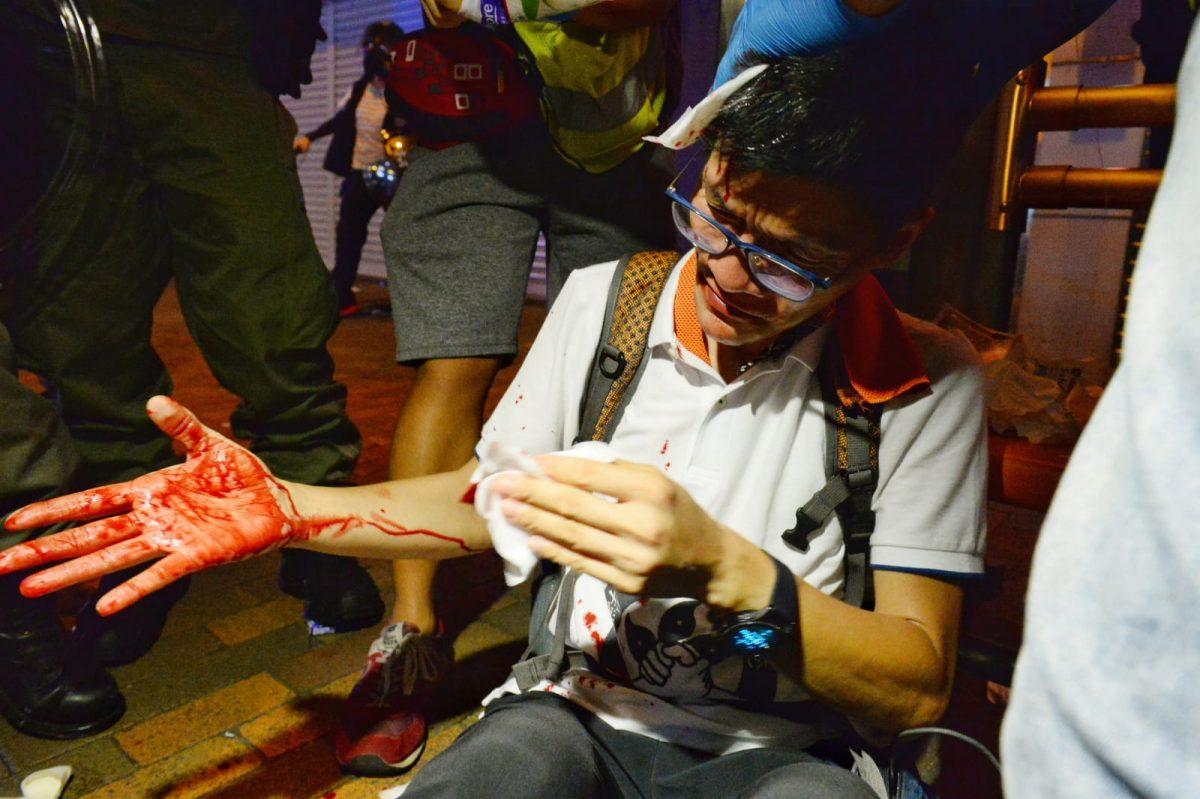
By night’s end, four people were admitted to the hospital for injuries, according to the Hospital Authority of Hong Kong. It didn’t identify whether the injured were civilians or police. A police spokesperson said that they had arrested at least 49 people for unlawful assembly and for possession of weapons during the clearance operations.
Saturday March
In Yuen Long, local resident Max Chung applied for a march to be held, calling on the Hong Kong government to meet protester demands, including an independent investigation into police use of force.Police rejected the proposal, but thousands gathered nonetheless.
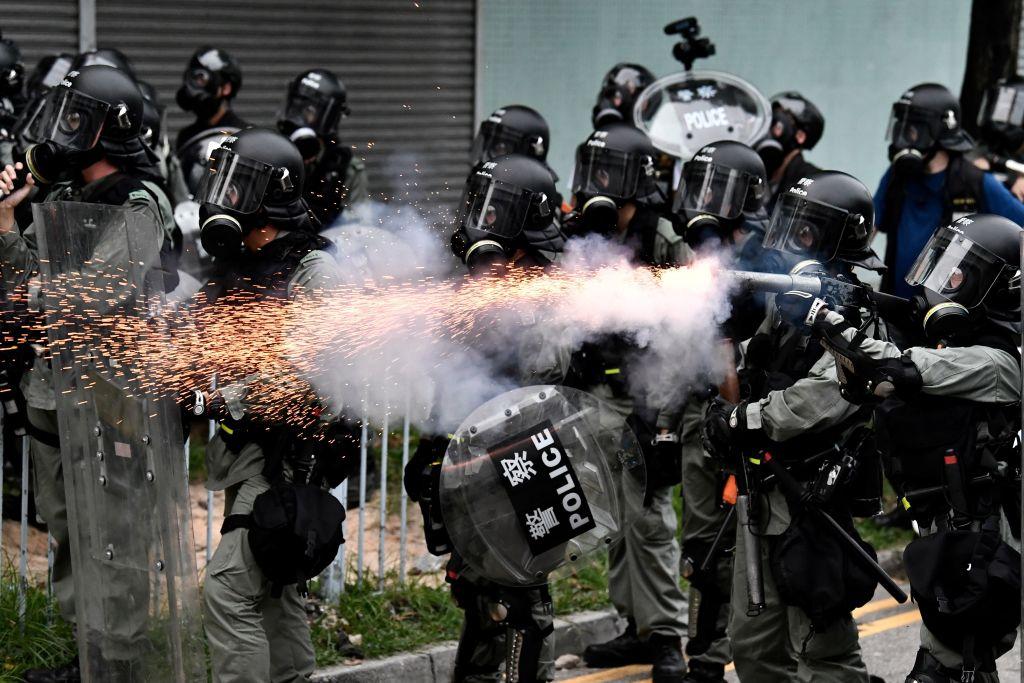
Hong Kong media reported that several reporters were hit by the police’s rubber bullets. Protesters eventually retreated into the metro station. At around 10 p.m. local time, violence escalated as police moved in on protesters inside. Some of them fell to the ground as they tried to flee. Bloodstains could be seen spattered on the floor.
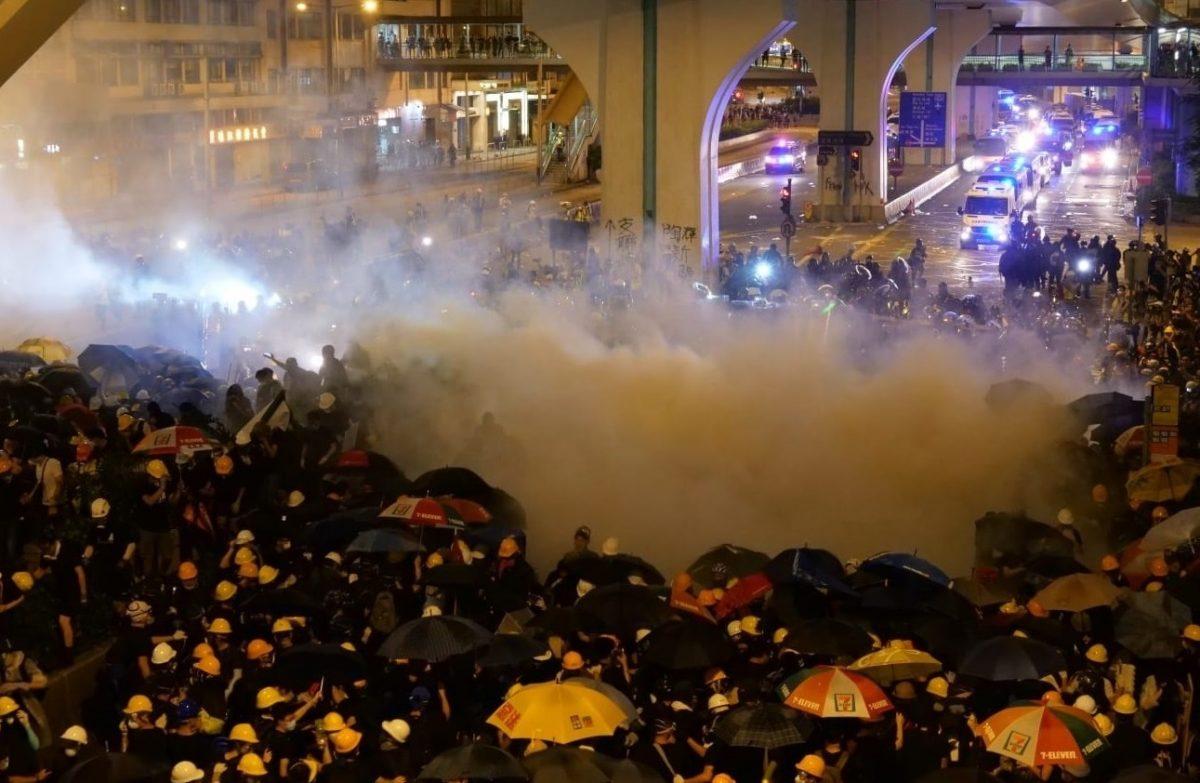
24 people were injured, with 2 in serious condition, according to the Hospital Authority.
“The violent scenes in Yuen Long tonight were in part because Hong Kong police chose to inflame a tense situation rather than de-escalate it,“ the statement read. ”There were repeated instances today where police officers were the aggressors; beating retreating protesters, attacking civilians in the train station, and targeting journalists. Alarmingly, such a heavy-handed response now appears the modus operandi for Hong Kong police.”
Hong Kong media The Stand News reported that 11 men between the ages of 18 and 68 had been arrested on charges including unlawful assembly, assaulting police officers, and possession of offensive weapons.


